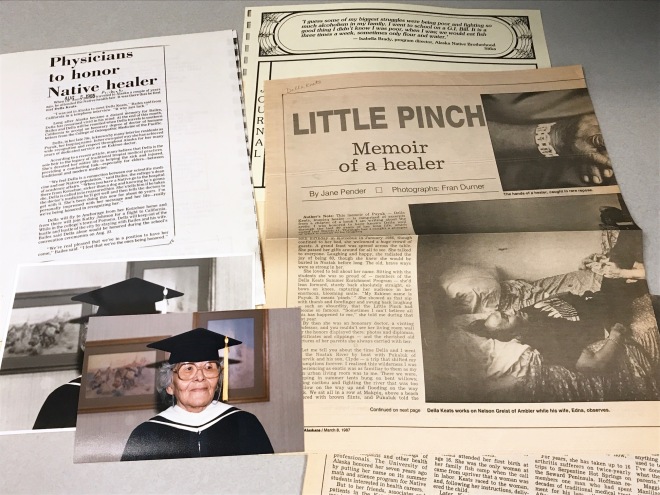Although Women’s History Month has come to a finish, we wanted to dig into one more collection which focuses on women in Alaska; the records of the Alaska Women’s Commission did not disappoint.
The Alaska Women’s Commission (AWC) stemmed from the creation of the Alaska Commission on the Status of Women, which passed in 1978 as Alaska Statute 44.19.165. The statute outlined the purpose of the commission as “…to implement the recommendations contained in the preliminary study on the status of women in Alaska which was mandated by the Ninth Legislature, Second Session, under Chapter 99 SLA 1976, and improve the status of women in Alaska by conducting further research and by making and implementing additional recommendations on the opportunities, needs, problems, and contributions of women in Alaska including, but not limited to 1) education, 2) homemaking, 3) civil and legal rights, and 4) labor and employment.”

The AWC took on a variety of issues affecting women conducting studies, publishing in-depth reports, hosting conferences in rural areas, providing resources and publications, and producing and backing legislation in the interest of women from all backgrounds and from all regions of Alaska.
The Alaska Women’s Commission records not only record the administrative history of the commission but also offer a view into the issues affecting women during that time on a state and national level. Photographs, public service announcements, speeches, correspondence files, legislative files, committee meeting packets, and annual reports are just some of the resources available in the AWC records.
“Many outstanding women have helped to shape Alaska by contributing their talents and skills. To honor these women and to provide visible role models for tomorrow’s leaders, I have established the Alaska Women’s Hall of Fame. These awards will acknowledge the achievements of true pioneers like Lisa Starr Rudd, whose unwavering belief in women’s equality led to the creation of the Alaska Women’s Commission. To memorialize her achievements, the Women’s Hall of Fame is dedicated to her.” – Governor Steve Cowper
Established in 1988 during the 10th anniversary of the AWC, the Alaska Women’s Hall of Fame went on to induct leaders such as civil rights activist Elizabeth Peratrovich, health care professional Arne Beltz, activist and educator Lucy Frey, and mayor and activist Lillie Hope McGarvey. In box AS 9427 theirs are just a few files among dozens of biographic profiles on the women who have helped shape the history of Alaska.

These folders include biographical sketches, subject files, photographs, news clippings, and other materials compiled from the State Archives and Library’s Historical Collections as well as from other archives across the state like the University of Alaska’s Archives and Special Collections. Below are peeks into the files of Mary Antisarlook, Marie Drake and Elinor Dusenbury, Della Keats, and Nell Scott, and represent a sample of materials you might find in these folders.




If you’re interested in digging further into the Alaska Women’s Commission records (RG53), you can visit us at the Alaska State Archives, located on the second floor of the Father Andrew P. Kashevaroff Building in downtown Juneau, Alaska. We’re open to the public Tuesday – Friday from 10a – 4p*.
*Summer hours begin April 30th. The Archives will be open Monday – Friday, 10a – 4p.

